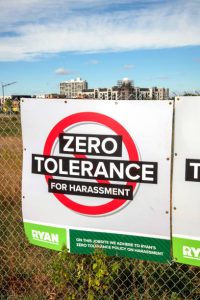
Victimisation: What is it and how to respond
Victimisation is little understood by employees and employers alike. We know this because we get the calls daily from aggrieved employees about what’s going on in their workplace. Is it victimisation or bullying, or discrimination or excising a workplace right, a work safe or police matter? The answer in many cases can be complicated. Let’s examine what goes on in many Australian workplaces both big and small. Victimisation is defined as treating someone unfairly because they have made (or plan to make) a workplace complaint. For instance, a complaint about sexual harassment, bullying or discrimination.
Being treated unfairly, differently or unlawfully because of making a complaint is a fear many employees have. The fear exacerbates when thinking about the possible effects of losing their job, their house, having to take the kids out of school because of the school fees. And in many cases, this fear dissuades them from making the complaint in the first place. But what every employee must remember is that making a workplace complaint is a protected right. If you are subjected to victimisation at the hands of a boss or manager, they could face the consequences of the law. How you excise or enforce that right is the challenge.
Legal protections against victimisation
The Fair Work Act 2009 provides Australian workers with a range of workplace protections. And one of the most well known are the General Protections provisions, which apply to all employees – whether full-time, part-time or casual. The General Protections outlines that employers are prohibited from taking an adverse action against an employee. That is, to dismiss them or treat them unfairly based on a prohibited reason.
Prohibited reasons include things like discriminating against an employee because of their race, sex, sexual orientation, age or religion, in addition to several other characteristics. It also includes long periods of sick leave taken by the employee or if they have taken part in industrial activities. The grounds on which you can base a claim vary from state to state, so you need to check to ensure your in the right jurisdiction. (state or federal).

You have the right to make a complaint
Exercising a workplace right is also a protected reason. Employers are prohibited from victimizing employees if they, for instance, make a complaint about sexual harassment, bullying or discrimination. Or if they intend to or have assisted someone else to make a complaint.
This applies whether the complaint is made to their employer or the Fair Work Commission (FWC). It also applies if the employee makes a complaint via any other workplace relations body, like the Australian Human Rights Commission.You also have the right to provide information to an investigation which may implicate your employer. And you also have the right to blow the whistle on illegal activity that your employer is undertaking. This could be by informing the police or via a whistleblowing hotline.
Its important to note, that your complaint is preferably in writing. So if your Employer in the future denies they have ever received your complaint there is a record. Now many employees don’t want to put it in writing, they don’t want to make it formal or make a big deal out of the issue. They just want the issue rectified. However if down the line you pursue a claim in a Commission, the system is more evidenced based.

What can victimisation look like?
Victimisation of an employee can be actions that make them feel uncomfortable and intimated. They may also be made to feel isolated and unwelcome in the workplace. This could be the result of being bullied because they have made a complaint. For instance, being abused or belittled by their boss in front of others. A victimized employee may also have their employment conditions changed to their detriment. Or they may be excluded from social or work interactions.
Victimizing behaviour by an employer may also see them deny promotion opportunities or demote an employee. It can also include the employee being issued a formal warning or dismissed for making a complaint.
Manager dismissed after making bullying complaint
An example of victimisation that hit the headlines in 2020 is the case of Roohizadegan vs TechnologyOne Ltd[AS1] . It involves Benham Roohizadegan, who worked for ASX-listed tech company TechnologyOne.
Mr Roohizadegan had commenced working for TechnologyOne in 2006 as the State Manager for Victoria. Thanks to the company’s growth, by 2016 his annual salary had increased from an initial $208,932 to $845,128. He had been awarded several awards and benefits for his services to the company and his outstanding performance in his role.
Despite the generous pay, Mr Roohizadegan’s private and professional life were not pleasant at all. From late 2010, he began experiencing family problems stemming from his daughter being diagnosed with a serious disease. And he was also dealing with a toxic culture at work, which caused him to make several complaints about bullying he experienced. He was also, however, the subject of bullying complaints from several of his colleagues.

Employee makes complaint about victimisation
In February 2016, Mr Roohizadegan made his first complaint to the founder and executive chairman of TechnologyOne, Adrian Di Marco. He alleged that an employee under his management was undermining his authority. Mr Roohizadegan said that he and the subordinate had had an argument about who to recruit for a role. And that after this argument, the subordinate threatened to management that “one of them would have to go.”
Mr Roohizadegan claimed that following this argument, he experienced victimisation by his colleagues. He alleged that staff in his team were “marginalizing him” and that they were making decisions behind his back.
Employee behaviour is called into question
In April 2016, a member of the company’s HR department happened to meet members of TechnologyOne’s sales team while on a trip. And they complained to the HR representative about behaviour they had experienced from Mr Roohizadegan. Subsequently, the HR representative sent an email to the HR director detailing these complaints. It also outlined that Mr Roohizadegan had told her that he was considering making a bullying claim against a colleague. And also, that he planned to take legal action against them.
This email was then forwarded to Mr Di Marco, who described the complaints against Mr Roohizadegan as the worst he’d ever seen in his 35-year career. Mr Di Marco made the decision to dismiss him. However, not immediately, as he still wanted Mr Roohizadegan to complete an ongoing project.

Employee makes further victimisation complaints
A day later, Mr Roohizadegan sent an email to Mr Di Marco. In it he made complaints of bullying that he had suffered from several of his colleagues. This included allegations of victimisation, like for instance, being excluded from key client meetings. As a result, a TechnologyOne HR representative had a series of brief meetings with the members of staff named in Mr Roohizadegan’s complaint. But the HR department never went so far as to conduct a formal investigation into the bullying that he allegedly suffered.
With no formal investigation to take place, the HR Director advised Mr Di Marco not to terminate Mr Roohizadegan’s employment.

Employee is summarily dismissed after experiencing victimisation
Despite the advice from HR, Mr Di Marco decided to proceed with Mr Roohizadegan’s dismissal anyway. In May 2016, Mr Roohizadegan was on stress leave due to the bullying he alleged to have experienced by his colleagues. So, he was summoned to a meeting at TechnologyOne’s offices and was summarily dismissed by Mr Di Marco.
Mr Roohizadegan subsequently made an adverse action claim against TechnologyOne. He alleged that he was dismissed for prohibited reasons, which included exercising a workplace right to make a complaint about his employment. That is, his complaints about bullying by his colleagues. He also claimed that his contract had been breached in relation to the non-payment of incentives since 2009.
Was it victimisation? The Federal Court of Australia makes its ruling
When it comes to adverse action claims, the onus is on the employee to prove that the adverse action was taken for a prohibited reason. That is, that it was taken because of a protected attribute – whether it’s their sex, race or for exercising a workplace right. One of the main reasons adverse action claims fail is due to the employee’s inability to prove this ‘because of’ causal link.
At Mr Roohizadegan’s hearing, Federal Court Justice Kerr stated that TechnologyOne would only be found to have taken adverse action if they dismissed him because of his exercising a workplace right. The company was tasked with proving that, on the balance of probabilities, Mr Roohizadegan had not been dismissed for this prohibited reason.

“Tortured and evasive:” Justice Kerr skewers employees claims
When it came to Mr Di Marco and his role in the dismissal, Justice Kerr found the executive chairman wanting in several regards. Firstly, he criticized Mr Di Marco for repeatedly rejecting “professional HR advice that it would be unfair to dismiss Mr Roohizadegan on the basis of mere allegations” Secondly, Justice Kerr stated that Mr Di Marco was a “highly unimpressive witness.” He characterized his evidence as “tortured and evasive” and that his “choice was to stand with the bullies rather than the bullied.”
Justice Kerr ultimately found that TechnologyOne had victimized Mr Roohizadegan. He found that the company had not lawfully dismissed him and had taken adverse action against him. Justice Kerr said that the one of the principal reasons for the adverse action was Mr Roohizadegan’s complaints about being bullied.
TechnologyOne was ordered to pay a whopping $5,228,410 in damages to Mr Roohizadegan.
In response to his court victory, Mr Roohizadegan took to LinkedIn to state that “Sometimes, good wins.” He also said that he hopes the Federal Court’s decision will help send a message that victimisation isn’t acceptable.
“I sincerely hope that by raising awareness of this severe misconduct by TechnologyOne, that my experience helps to motivate people at all levels of business to actively identify and address bullying, harassment and victimisation in the corporate world address bullying, harassment and victimisation in the corporate world.”
stated Roohizadegan
What can you do about victimisation?
Being treated unfairly or dismissed for making a complaint is never acceptable. But thanks to the General Protections, Australian workers have the means to seek redress through the Fair work.
If you have experienced victimisation and need guidance on how to mount a successful adverse action claim, A Whole New Approach (we are not lawyers) can help. We’re Australia’s leading employment commentators and mediators who’ve helped over 16,000 employers make claims over the past two decades. We are proud of our staff and the outcomes they get for our clients. All fair work matters, including abandonment of employment, workplace investigations, and redundancy issues.
Call our expert team today on 1800 333 666 for a free and confidential conversation.

Articles similar to Victimisation: What is it and how to respond
Bullied worker wins $2.8M general protections payout






